Below is a translation of Daryna and Volodymyr Olshansky’s “The History of One Theater,” published Feb. 2, 2021, on Zbruc
“In the center on the left side of Lesia Kurbasa Street in Lviv there is a building that you cannot pass by without noticing — the eye will first linger on the posters and signs of the theater located there, then slide up the facade, linger on the luxurious balcony, then go to bas-reliefs and sculptures — whether you like it or not, you will stand in front of the building for at least a minute or two. However, this is not just about the architecture — behind these walls lives a real history: the history of theater, the history of people.”
Last March, Lviv residents celebrated the 110th anniversary of the opening of the Casino de Paris, for which, in fact, a building was built at 3 Rejtana Street (now Lesia Kurbasa Street). And at the end of last year, “History. Space. Time: Behind the Scenes of the Casino de Paris” opened, a virtual exhibition dedicated to the history of one building, which from its foundation to this day has served Melpomene.
The opening of the exhibition was preceded by research of archival documents, the re-reading of centuries-old newspapers, and the study of works by historians. “We have significantly expanded our understanding of the theater that operated in this space, its artistic value and historical significance for the culture of Lviv and Galicia. After all, this small theater was a center of diversity and innovation, a place where the most famous artists not only from Poland but also from all over the world presented their program,” say the authors of the exhibition Daryna and Volodymyr Olshansky. Daryna is an archivist, researcher of the history of theater and chief administrator of the Les Kurbas Theater. Volodymyr is a researcher of the history (including oral) of Galicia and Transcarpathia, an archivist and genealogist, a member of the Nadsiannia Society.
Now the newspaper Zbruc has the opportunity to acquaint the reader in detail with the results of these two researchers’ work and invite those interested to visit the exhibition itself, which in addition to text and visual part, contains an audio component that literally immerses the visitor in the atmosphere of the past, allows to hear its voice.

Today, the building of the Kurbas Theater is a place with its own unique atmosphere. The years, events, and destinies have left their inevitable imprint on this unique building in the center of Lviv. After all, behind the exquisite architecture, marble walls, and elegant decoration hides something truly valuable – stories. The stories of people who lived their lives in this theater, worked, created, who filled this space with their joys and sorrows, talents and inspiration. The theater at 3 Rejtana Street was a separate multicultural Galician world. Here a large number of artists of different nationalities began their creative paths, experimented, found new forms, embodied artistic ideas. Poles, Jews, Ukrainians, Austrians, Germans, Spaniards, French – all together created a single common artistic space.
Our project is an attempt to look behind the scenes, an attempt to read the history of this space and the people who created it. And tell them to you.
So we invite you behind the scenes of the Casino de Paris.
Construction of the Casino de Paris Variety Theater (1908–1909)
The modern Lesia Kurbasa Street, where a stone building was built for the future variety theater, was built in the nineteenth century. From the time of its foundation until 1870, the street, which is more like a lane, did not have its own name. It was called “Jesuit Side” or “Stanislav’s Transverse,” depending on the name of the adjacent side streets. And since 1871 the street was named after Tadeusz Rejtan. During the German occupation in 1941, the street was called Reitarska Street, and in 1950 it was named after Pavlik Morozov. And already in 1989, the street finally received its modern name and is named after the famous Ukrainian director Les Kurbas. At the end of the nineteenth and the beginning of the twentieth century, the street was actively rebuilt, and new multi-story buildings were built to replace the wooden houses.
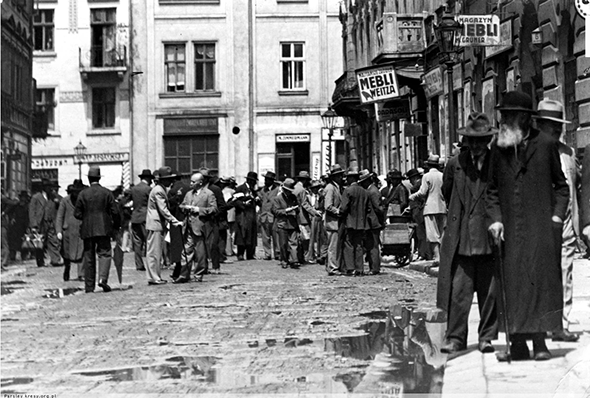
So, in 1908, to replace such a wooden house on 3 Rejtana Street, the Vienna Architects’ Office designed a four-story Secession building for the variety theater. But in 1909 the project was redesigned by Lviv architects Zygmunt Fedorski and Stanisław Macudziński. The owner of the future theater became the famous Lviv [Lwów / Lemberg] businessman-restaurateur Franciszek Moszkowicz. His signature can be seen on the approved design of the building.
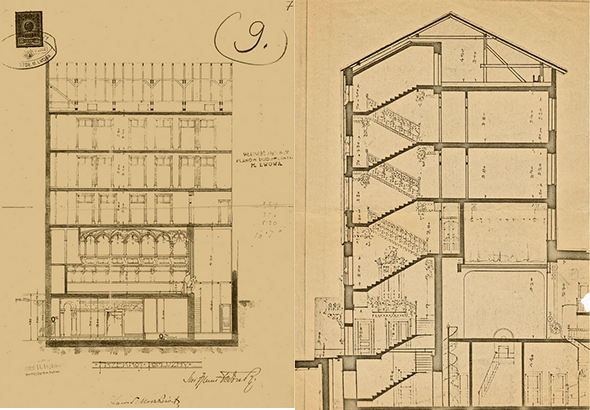
From the very first sketches of the architects and the wishes of the customer, the new structure in Lviv was planned as a theatrical and entertainment building. The exterior used Gothic motifs in combination with decorative elements typical of Secession, as evidenced by the lancet windows, mascarons, cornices, the ceiling of the staircase, and the decoration of the balcony above the main entrance to the theater.
Leaving the metal beams and loggia constructions proposed by the Vienna Bureau and not changing the principle of the planning scheme of the third and fourth floors, the Lviv architects remodeled the first and second floors, i.e., the theater, and also designed the fifth floor.
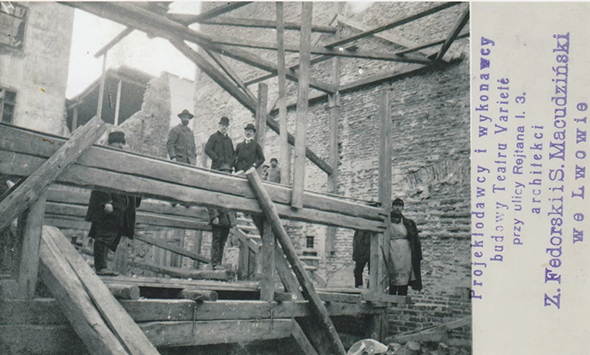
At first the main axis of the theater building was perpendicular to Rejtana Street, but in the new project it became parallel to it. The main component of the theater was an oval hall 11.5 meters deep. A cloak room, stairs, sanitary facilities, and a lobby surrounded the hall in a semicircle. The lobby was connected to the other floors of the building not only by stairs, but also by an elevator, the shaft of which is still opposite the toilet. Despite the rather small size of the chamber stage (the mirror of the stage is 4.5×5.5 meters and a depth of only 4 meters, the total height of the stage is 9 meters), its design was extremely well thought out. Instead of a hold under the stage, a very convenient communication space was designed, which is connected to the stage floor by a spiral staircase on the left and a service staircase on the right. There was a platform for the prompter, as well as dressing rooms for artists and other technical facilities. Above the stage was a box for batten and mechanisms for lifting them.

The architects also took care of the interior of the theater. The famous Lviv artist and set designer Zygmund Balk was invited to decorate the walls and ceiling with ornamental paintings (later he also decorated the scenery for the performances of this theater). And the sculptor Franciszek-Tomasz Bernat decorated the facade of the building, as well as the balconies of the oval hall and the portal of the stage with medieval- and theatrical-themed reliefs and bas-reliefs. The elegant, luxurious interior of the theater impressed visitors with its beauty. And the latest electrical equipment from Vienna created a spectacular combination of artificial lighting of the ground floor and loges with various chandeliers and lamps. Unfortunately, only the exterior features of the former variety theater have survived to this day. In the middle of the room, the figured reliefs were destroyed, and the paintings were hidden under a layer of plaster and paint during renovations in the 1950s.
Since February 26, 1980, the building is an architectural monument of local significance. A number of restoration works have been carried out over the last decade. With the assistance of the Department of Historic Environment of the Lviv City Council and direct cooperation with the German Bureau of Technical Cooperation (GIZ) within a project of Municipal Development and Renovation of the Old Town of Lviv in 2014 the balcony was restored, and in 2016 the windows and doors. And already in 2017, with the support of the Department of Historical Environment of the Lviv City Council, the facade of the theater was restored.
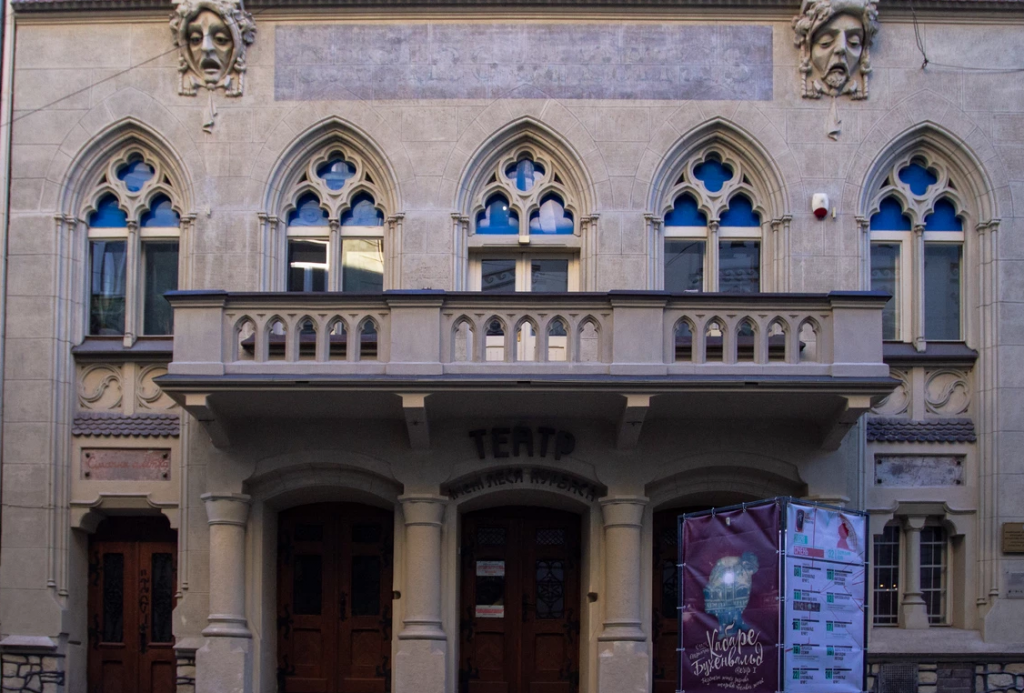
Opening of the Casino de Paris Variety Theater (March 2, 1910)
During the restoration of the facade from under a layer of paint above the balcony of the second floor, the name of the theater “Casino de Paris” was uncovered, as well as above the fourth floor the name of the hotel “Belwedere,” which occupied the 3rd, 4th, and the 5th floors of the newly built building that opened to visitors in February 1910.
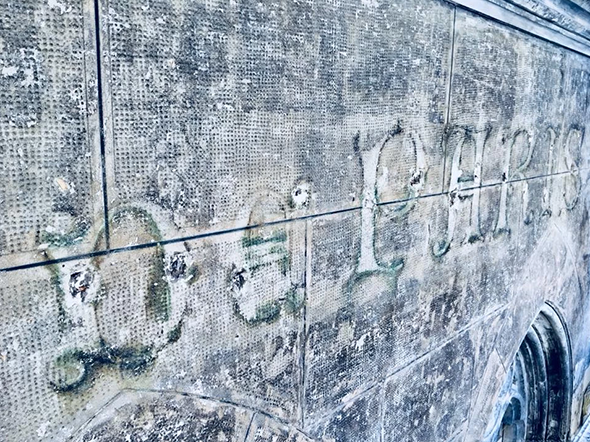
The hotel had 50 rooms, from the most exquisite to the cheapest. And interestingly, it was extremely comfortable and modernly equipped, as for Galicia at the beginning of the twentieth century. It had electric lighting, central heating, an elevator, bathrooms, and a ventilation system. There were stylish interiors in each room, hot and cold water in the rooms, and the hotel had a first-class restaurant.
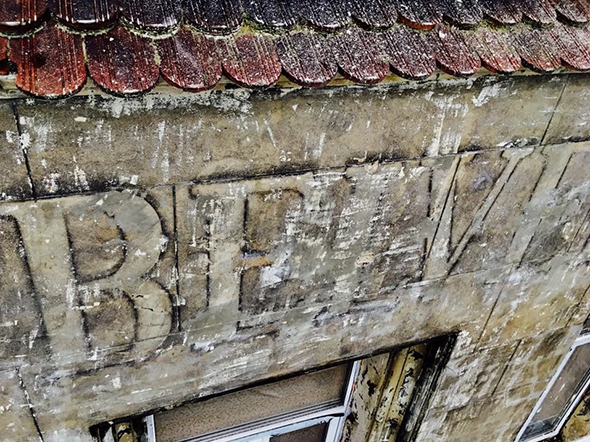
And on March 2, 1910, the grand and festive opening of the Casino de Paris variety theater took place.
“A new recreation center called Casino de Paris has been opened in our city. The space is not too big, but the layout is very elegant and from the point of view of architecture creates a whole space full of beauty. The hall, which is intended for performances, was created in a very original way, as if it had been transferred to the composition of the walls of Lviv from some old German city. In the middle, the ceiling is not too high, but the Gothic-style vault inlaid with sculptures is also in the Old German spirit, and all this comes to life thanks to the brilliance of many electric lamps in the hall. The ground floor is filled with chairs and tables, the loges form a kind of round knight’s table. The interior paintings of the hall are painted by the famous theatrical decorator Mr. Balk, the sculptures are made by Mr. Bernat, and the curtain is decorated with the brush of artist-painter Mr. Wygzywalski. The curtain shows a picture of the end of the bacchanalia. In a meadow full of purple and yellow irises, under a pine grove and by the sea in the background, we see a figure of a Roman patrician resting half-lying. This is an older man with the face of a satirist and the remnant of a table crown on his bald head, around which six Bacchanalian girls dance, teasing him and as if mocking the fact that the Bacchanalia has already knocked him off his feet. And the seventh girl plays the flute. The solemn performance took place in the presence of numerous invited guests: government officials, journalists, and artists. The evening program was exquisite and varied, was positively received. In particular, people liked the performance of the troupe Balaschoff, dancing with Denisy de Flavigny and her partner Reinosa, the duo Luba (with Polish songs and dances) and, of course, the art and comedy troupe Kwartet Boheme. The whole program was complete in a restrained tone, without a hint of triviality, which is a good sign for the future and promises the success of this cause.” — Gazeta Lwowska, No. 50, March 4, 1910, page 4
Casino de Paris Variety Theater Program (1910–1914)
In 1910, Lviv was the capital of the Kingdom of Galicia and Lodomeria, a part of the Austro-Hungarian Empire. And, as befits the capital, it developed and changed very rapidly. Theaters occupied a special place in the cultural life of the inhabitants, the vast majority of whom were Poles, Jews, and Ukrainians. There were several theaters with a population of just over 200,000: the City Theater (modern Opera House), the Colosseum (located on Kulisha Street, the building has not survived), the Skarbek Theater (modern Maria Zankovetska Theater). And in addition to the big theaters, there were variety shows in cafes and restaurants in the city. Such variety theaters were very popular among the locals, because you could spend a very elegant and fun evening, enjoying champagne and a variety of dishes, as well as watch an art program of light entertainment.
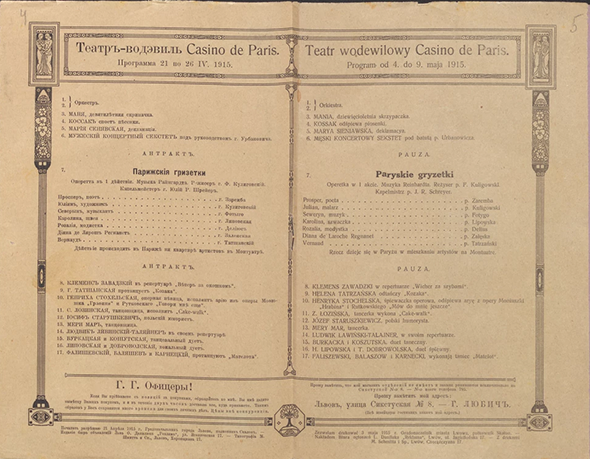
As for the new Casino de Paris, director Franz spared no expense and invited to his variety theater performers of various genres, and most often it was well-known foreign artists. The entertainment program of the evenings usually changed every two weeks and consisted of two or three parts, which included satirical sketches, dance numbers, operettas, cabaret, humorous numbers, farces. Usually, several famous stars were invited, and between their performances, lesser-known young performers took the stage.

The hall of the new Casino de Paris was filled with spectators every night. The audience enthusiastically accepted the well-composed programs. For example, in 1911 the program of June 1 included performances of the legendary Viennese cabaret Fledermaus. Also in 1911 and 1914 on the stage of Casino de Paris performed the famous Polish comedian of theater and cinema Józef Zeidowski.
It was a tradition among artists to leave their autographs on the walls of the theater behind the stage. Part of such a wall is now uncovered, and we have been able to decipher at least one autograph. It belonged to the Spanish dancer and famous pianist and composer Enrique Granados, who wrote the album “12 Spanish Dances for Piano.” Also, the announcement of the performance is mentioned in the program for 1912 in the magazine Lviv Theater.

An auditorium with seats and tables was placed on the ground floor of the theater. In the same magazine Lviv Theater in 1912 there is a detailed layout of the hall with the cost of seats. For example, the most expensive seats were in separate loges — 20, 25, and 30, seats on the ground floor cost from 3 to 8 crowns. The ground floor accommodated six rows of tables, there were also seats around the perimeter. The loges on the balcony of the second floor accommodated 58 seats, and the ground floor 170.

The success of Casino de Paris was enormous. And all thanks to the direct participation of the director Franciszek Moszkowicz, who carefully selected the personnel, chose the program, and invited artists. He often met the visitors of his theater and socialized with the audience. Often in the press the announcement of the program was accompanied by a personal invitation from director Franz.
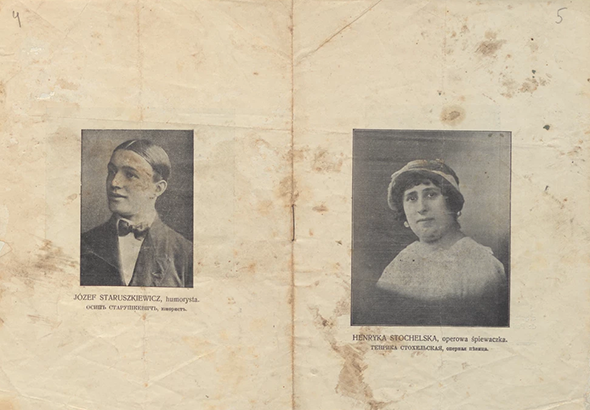
In addition to the musical and theatrical program, since 1911 part of the evenings were occupied by film screenings. Until 1916, the owner of the cinema was Melchior Meiblum, one of the most famous Lviv cinema owners. Ticket prices were relatively low — from 2 to 5 crowns on the ground floor and loges on the 2nd floor. In the photo of the hall you can see the loge in the center, which was intended for the operator. On the layout of the hall you can also see a specially marked loge for the cinema.
Casino do Paris Vaudeville Theater (1914–1920)
The theatrical life of Lviv changed drastically when in September 1914, with the beginning of World War I, Russian troops occupied the territory of Galicia. The occupation regime imposed a ban on performances that did not pass Russian censorship. Theaters could resume their activities only after obtaining a special permit.
The Casino de Paris resumed its activities two weeks after the beginning of the occupation and opened on September 16, 1914, as a vaudeville theater. In Lviv, it was the only theater that existed throughout the occupation. The lack of competition during the first months of the occupation allowed theater owner Jonas Weiss to involve the best actors left in Lviv. This formed a very unique troupe of Polish, Ukrainian, and Russian actors, led by a Jewish director, who not only had never crossed paths on the professional stage before, but were also representatives of competing national theaters. In addition, they were joined by visiting artists from the Russian Empire. The troupe was based on opera and operetta artists of the Zaremba City Theater, Kuligowski, Michał Tatrzański, ballet dancers Paulina Koszucka, Michał Nusser, Zuzuanna Lozinska, Czesława Burkacka, former actors of the famous cabaret Ludwik Ludwikowski — Józef Delius, Józef Staruszkiewicz. Also, after the disbandment of the Ruska Besida theater, Ukrainian actors joined the troupe.

For example, in 1915, Polish actors Stefania Gordon, Clemens Zawadski, Henricha Stochelska, and Ukrainian Vasyl Kossak and his wife Iryna Kossak and her sister Sofia Stadnykova performed in the operettas “Paris Grisettes” by Reinhardt and “Nine Girls in Uniform” by Juliusz Schreier. Sigmund Balk was the set designer of some of the performances.
The main part of the program was short performances of various genres. The repertoire consisted of short one-act farces, comedies or operettas, popular arias from famous operas, sketches, monologues, comics, Ukrainian songs, music and dance numbers. Thus, in February 1915, along with solo vocal, musical, and choreographic numbers, the grotesque operetta “No Cat” and the two-act farce “The Doctor,” Uricki, the baritone of the Grand Opera from New York, and the city singing sextet performed every day. It began at 6:30 p.m. and lasted until 9:30.
“The vaudeville theater Casino do Paris yesterday presented a new, very diverse program. Laughter reigned in the hall during the one-act farce “The Doctor” and the grotesque operetta “No Cat.” Both plays, though unpretentious, were well performed, much to the credit of city theater artists such as Zaremba, Kuligowski, and Tatrzański. After that, there was a lot of other entertainment, such as performances by a transformer, male and female singers. A very well-chosen male concert sextet sang several songs. The best, however, were dances, which the artists had to repeat on request several times. A storm of applause broke out of the hall when the original dance was performed, imitating the dance of sailors “Matelot.” Miss Lozynska was the unconditional prima here. Previously, this actress played only maids, never appeared on billboards — she was a real Cinderella of the city theater. Now she has developed her talent, gained self-confidence and enchanted the audience yesterday with her casual grace of dance.” — Gazeta Narodowa, R.55, 9 February 1915, no. 25, para. 4.
The program changed every Monday. Despite the sometimes negative criticism for the entertaining, low artistic level repertoire, the theater enjoyed considerable popularity. It was even invited on a tour to Kyiv in May 1915. On June 22, 1915, the Russian army left Lviv before the Austrian-German offensive.
From 1916 to 1918 the owner of the cinema was the Red Cross. Much of the proceeds went to help soldiers and their families. Before the beginning of each session, the latest information from the General Staff about the hostilities were presented, which were often published in the morning press only the next day.
The events of the First World War left an impact on the activities of theaters in the following years, but in 1919, when Poland began to assert its position, a group of Warsaw artists Czwórka led by Anda Kitschman arrived in Lviv. Later they were organized into a literary and artistic theater. Performances took place every night and consisted mainly of song and music numbers. By July 1919, Lviv became part of the Second Polish Republic.
Bagatela Literary and Art Theater (1920–1925)
So, its the year 1920, and on September 10, the Casino de Paris opens for a new season with an updated program and a new name. Now it is the Bagatela literary and artistic theater. The established position of the Polish community in Lviv continued to support art and develop culture. Many artists came to Lviv from different parts of Poland. Thus began the period in the theater, when the level of art programs had grown significantly and moved into the plane of theatrical performances. The permanent troupe consisted of professional actors. And even the program now became a repertoire. Initially, the theater operated under the direction of cabaret artists Władysław Ochrymowicz and Teodora Wandyczowa.

And on August 27, 1922, the festive opening of the new season took place. It was the inauguration evening, when the actor and director Bronisław Bronowski became the director of Bagatela (until 1925). This artist was already well known and loved in Lviv for his subtle humor and acting talent. They wrote that the evening was extremely joyful, and “even the Lviv rain did not spoil the mood.”
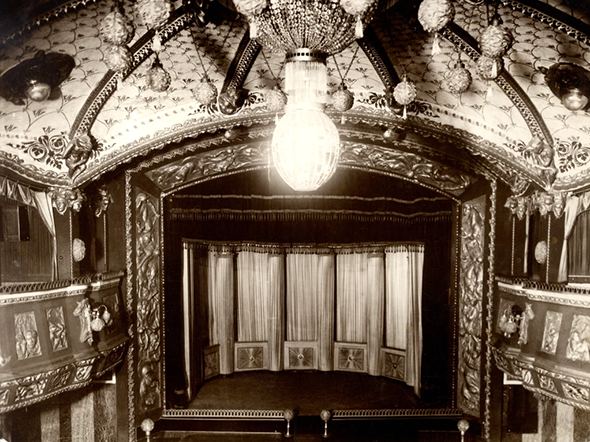
Under Bronowski’s direction, the theater was extremely successful, and the repertoire consisted of satirical sketches, revue, and cabaret performances. He himself was the author and performer of many texts — about 30 of his sketches and farces were performed on the stage of the theater. Critics loved Bagatela and called Bronowski a surprisingly talented actor, and the theater a true artistic cabaret of the best Western traditions, “an oasis of sincere laughter and unobtrusive satire.”
“Creative ideas are born under the lucky star in the Bagatela Theater. And the audience, which is sympathetic to the management of this theater, has never been disappointed. Because the director Bronowski, the soul of the Bagatela, always selects a program that brings success. From the flow of different ideas, he chooses those that exclude any monotony. So each program gives viewers something new. Everyone is looking forward to Bronowski’s appearance. When he appears on stage, a hurricane of applause erupts. This is how spectators greet their favorite. And Bronowski, sitting on a chair, which is his constant companion, magically entertains his fans. How many jokes and taunts he gives them, chattering with the audience — and the whole game in an original and restrained form. After his disappearance behind the scenes, viewers best understand who Bronowski is for Bagatela.” — Gazeta Lwowska, December 16, 1922
On March 16, 1925, Bronowski also celebrated the twentieth anniversary of his stage career.
“From the Bagatela.” It’s nice to write about anniversaries, and especially about the anniversaries of artists, because the atmosphere is sincere and cheerful then. And when the anniversary is of a great cabaret artist and author of no less successful satirical works on political and social issues, as well as many bluetas and farces — Bronisław Bronowski, we can immediately say that there is nothing but good praise and grateful wishes of ad multos annos for this favorite of the public. 20 years on the stage, how many joys and worries have been experienced… — so during the festive evening a friend of the jubilarian Nusser read a written prologue by Zywetski. Bronowski and his work in the theater is a living reflection of the hectic life of the city of Leo. The sharp sting of his satire always receives benevolent smiles from the audience. And so it happened this evening. The packed Bagatela auditorium enjoyed the fun. In addition to the jubilarian, who entertained the audience with his jokes, in a solemn, jubilee mood all his partners on stage played and entertained .
The bright program offered several very successful numbers, which were accompanied by long applause from fans of the work of the director of Bagatela. It is likely that the 20-year-jubilarian will not soon join the actors of retirement age, but will continue to share with the people his humorous and acting talent up until his 50th anniversary.” — Chwila, March 22, 1925
Thus Bronowski completed his directorship, and on May 8, 1925, after a short break, Franciszek Moszkowicz opened a dance floor in Bagatela. The theater once again began to undergo a transformation.
Bagatela Theater in the Interwar Years (1925–1939)
When interest in the cabaret gradually began to wane, director Moszkowicz, looking for a way to interest the audience in modern entertainment, relied on a music and dance program. The new season in Bagatela opened on September 1, 1925, with a free family dance floor. The people of Lviv liked the elegant entertainment. The program of the evenings changed every few weeks. To encourage visitors to dance, the artistic repertoire of jazz orchestras had to be similar to the American one. So jazz bands supplanted traditional sentimental waltzes, polkas, and quadrilles — now they danced the Shimmy, Foxtrot, Charleston, tango, and Boston. Dances to jazz music became a symbol of the interwar period.
In 1926 and 1927, the troupe of the Ukrainian Theater Yosyp Stadnyk also performed several times in this hall. They showed the play “Over the Abyss” by Mamontov, “War after War,” “Love” by Wildegans, the operetta “Clock” by Legar and “Eagles.”
In 1927, Moszkowicz renovated the hall, decorated it with colorful draperies, and updated the lighting. A mirror ball also appeared on the ceiling. In the photos of the interior you can see all these changes — you can see the renovation of the hall, the new lamps, the re-equipped box of the cinema operator, how the orchestra was moved deep into the auditorium hall. Also in the center there is a place for dancing and appropriate placement of tables. The former name “Casino de Paris” was returned, but the name “Bagatela” also remained.

When the radio started operating in Lviv in 1930, broadcasts of “light and dance” music became a permanent program. According to announcements in the Lviv press of this period, some of these broadcasts were made from the premises of the Bagatela Theater.
Director Franciszek Moszkowicz did not abandon the tradition of inviting famous performers to form entertainment programs in the evenings at the Casino de Paris. For example, in February 1931, the famous Polish musician and composer Alfred Melodist gave a concert:
“Alfred Melodist’s current invitation to Bagatela should be seen as a truly masterful effort by Mr. Franciszek Moszkowicz. This orchestra has a wonderful tradition from the time when this jazz band took the first steps in its career in our land, and now, coming directly from the center of the big world, from Davos, it brings with it a breeze of the latest rhythm and dynamics, modern music. The numerous visitors to Bagatela are now expected to enjoy what they have longed for: the performance of a wonderful jazz orchestra.” — Illustrated evening express, January 31, 1931, no. 229, par. 1, 2.
Also in February 1931, Moszkowicz opened another restaurant, but this time in Warsaw, and later moved from Lviv. The new Adria restaurant later became one of the most successful and popular in all of Poland. Several films were even shot in Adria, thanks to which we can see director Moszkowicz in the still today.

Preoccupied by of the Adria’s affairs, Moszkowicz made his old acquaintance and associate Adolf Tenenbaum co-owner of Bagatela. But he soon fell ill and entrusted the management of the enterprise to his wife Frederica. He also transferred his share of ownership to Bagatela’s financial manager, Bronisław Flaum, for three years in connection with his move to Warsaw. Unfortunately, the associates took advantage of Moszkowicz’s absence in Lviv and conducted the theater’s business in bad faith, which led to serious problems. During 1933 and 1934, a large amount of taxes was not paid, so the tax inspectorate opened a case against Bagatela. When Adolf Tenenbaum died at the end of 1934, all his fortune passed to his wife. Flaum also bequeathed his wealth to his wife. As a result, Moszkowicz could not even collect the debts from the swindlers through court. In 1935, the associates and co-owners of the building declared Bagatela bankrupt and organized the Femina union. While tax claims were constantly coming from Lviv, Moszkowicz was forced to pay most of the debt from his own funds to save his name.

Meanwhile, in 1936, Frederica Tenenbaum opened the Casino de Paris and successfully ran the business. As an example, the program of the evenings of the autumn season of 1936 consisted of dance performances and a music program. Among the performers were: Slava and Jerzy Ney (dancer, choreographer), winners of the international dance competition in Vienna; Greta Seldmeyer, a famous Viennese dancer; Emil Brie, virtuoso violinist and conductor.
Performances by jazz performers became very popular in the mid-1930s. The best jazz bands from all over the world came to Lviv on tour. For example, in 1937 and 1939, Eddie Rosner performed with his band at the Casino de Paris.
With the death of Franciszek Moszkowicz in 1939, the whole epoch of the Casino de Paris ended. After all, he was the main inspirer, generator of ideas and change. Also, the events of World War II left their mark on the life of the city once again.
The Owner of the Theater Franciszek Moszkowicz (1873–23.04.1939)
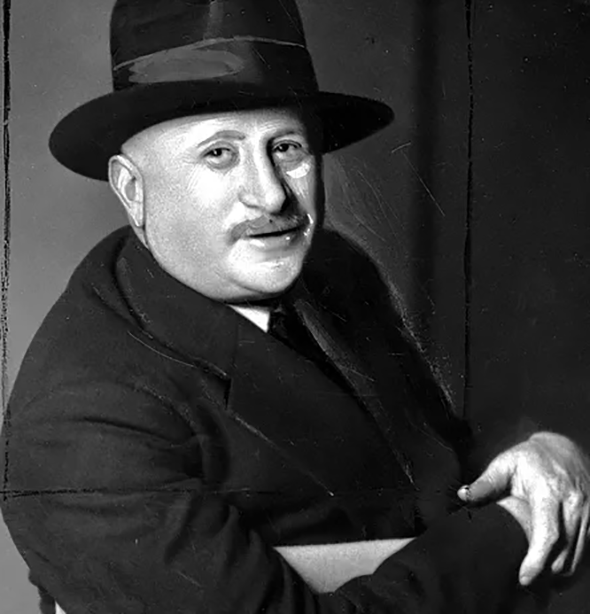
Franciszek David Moszkowicz was born in Lviv in 1873 into a Jewish family.
Starting as a waiter in the Teatralna Cafe, he had the opportunity to get acquainted with the cultural bohemia of Lviv. Personal qualities, ingenuity, a sharp mind, and a cheerful disposition helped Moszkowicz to quickly take his place among the famous businessmen and restaurateurs of Lviv. And in the early 1900s he became the owner of the large Europejska Cafe on 7 Jagiellońska Street (now Hnatiuka Street) and lived in the same building for some time.
And in 1907 he became a co-owner of an automobile business in Lviv. It was an original type of first taxi service, which transported wealthy customers.
At the time of the construction of the Casino de Paris, Franciszek Moszkowicz was already a well-known and wealthy businessman in Lviv. Therefore, when the city designed a theater building at 3 Rejtana Street he did not hesitate to invest in the construction of the new building. He used his entrepreneurial talent to create more than just a restaurant. A motivation was the desire to combine the culture of food consumption with refined entertainment. Therefore, the variety show format was the best. Thus opened the Casino de Paris.
Moszkowicz had an extremely subtle sense of time and the changes taking place in the cultural space. Therefore, given the development of the film industry in Lviv, film screenings took place in the Moszkowicz Theater. This small theater hall was filled with all of the most popular programs and entertainment.
When the Bagatela Literary and Art Theater opened at the Casino de Paris in 1920, Moszkowicz switched his attention to a new venture. It was Warszawska Cafe on Smolki Square (now Hryhorenko Street). Mr. Franjo, as director Moszkowicz was affectionately called in Lviv, managed to revive the restaurant’s popularity by introducing daytime and evening entertainment programs. During the day you could have breakfast there and read the latest press, while in the evening there were performances by famous jazz performers and a dance program.
Moszkowicz also used his successful experience from his restaurants in Bagatela. Thus, when the cabaret in Lviv began to lose its popularity, in 1925 a dance floor opened in the theater. In addition to restaurants, Moszkowicz also ran several wine and even furniture stores in Lviv.
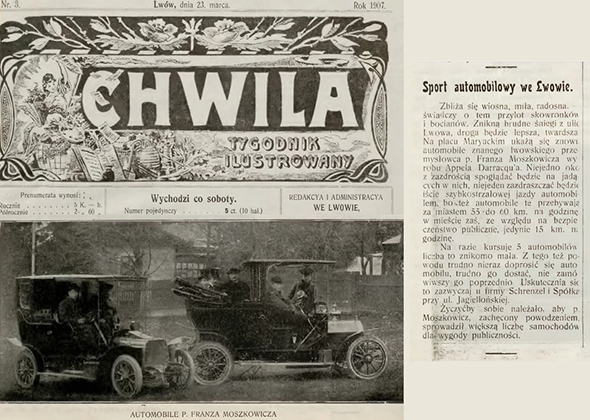
Franciszek Moszkowicz was not only a successful businessman, but also a man with a big and kind heart. He often made large donations, helping the Jewish community and his family.
The Warszawska Cafe in Lviv became very symbolic for Moszkowicz. After all, in the early 1930s, with the help of his close friend General Bolesław Wieniawa-Długoszowski, Moszkowicz moved to Warsaw to start a new business. And when the Italian company put up for sale a large building on Moniuszko Street, Franz immediately met with the owners and offered to open such a restaurant, which did not exist in the whole of Poland. He intended to become not only a director, but also a co-owner, and not even at his own expense. From Jan Karski’s memoirs, Moszkowicz said, “You give money, and I give it to you,” pointing to his bald head at that moment. So in 1931 in the center of the capital opened the large restaurant Adria.
Adria became the crown of Moszkowicz’s entrepreneurial talent. Modernly equipped premises, performances of the most popular jazz groups, a varied and refined program, service at the highest level — all this soon allowed the restaurant to become one of the most visited and successful establishments in Poland, and its director the first restaurateur in Poland, “popular king of the night, one of the most popular and beloved figures of the capital, always young, refined, and smiling,” as reported in the newspaper Justice in 1932. The desire to look “always young” prompted Moszkowicz to get rejuvenation surgery in 1933 according to Woronow’s system. Of course, the press could not pass by such sensational news. That’s how Moszkowicz’s cartoon on a scooter appeared.
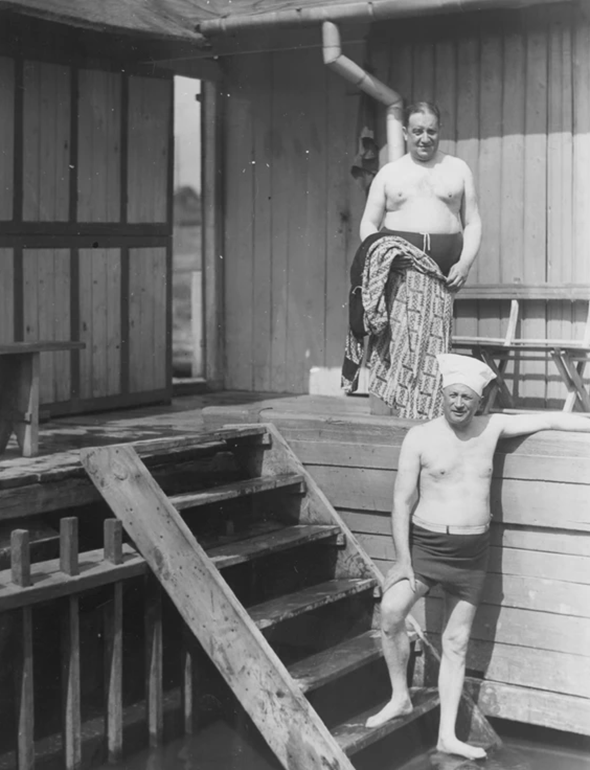
The tax troubles with Bagatela in 1934-1936 severely damaged his health, and in 1937 Moszkowicz was also accused of espionage. But despite all the troubles that were later resolved, Franz continued to do what he did best — discovering and making new establishments successful. In Kraków in 1938 as a co-owner he opened a cinema Scala. Moszkowicz’s daughter Rosa Ritterman was engaged in the artistic side of Skala’s activity.
With an unsurpassed flair for the profession, Moszkowicz made his restaurants and businesses some of the best and most successful. Therefore, when Franciszek Moszkowicz died in April 1939, both Lviv and Warsaw newspapers wrote about it. The authors of the articles mentioned with sadness and grief the beloved Franz Moszkowicz, a dreamer and a hard worker, a man with a big and open heart and a good sense of humor. Moszkowicz died in Kraków with his family, wife and daughter. But he ordered to be buried in Lviv in the family crypt. There was an incredible number of people at the funeral who came to say goodbye to a truly outstanding businessman and restaurateur.
Postwar and Modern History of the Space (1940–2020)
After the death of Franciszek Moszkowicz in 1939, the premises became the property of the Soviet authorities and were given to the Lviv State Regional Philharmonic with an orchestra, a Ukrainian choir with a variety sector, and soloists. In the late 1940s, the Palace of Pioneers was located in the building, in the early 1950s the House of Folk Art and the Department of Music and Theater Literature of the Galan State Regional Library. In 1970, the Regional Scientific and Methodological Center for Folk Art and Cultural and Educational Work began its work indoors. In the ’80s, when the movement of studio theaters began, there was a theater group, in which such stars of the Ukrainian theater as actor Roman Viktyuk and director Serhiy Danchenko began their career.

And on December 25, 1987, by the decision of the Lviv Regional Council of People’s Deputies, the Lviv Ukrainian Youth Theater-Studio was established as an experiment. The leader of the new theater was Volodymyr Kuchynsky — a practitioner, theorist, experimenter, actor, and director. The hall was given to the new theater for temporary lease, and a one-time subsidy of 30,000 rubles was allocated for the payment of the first salaries, purchase of radio, electric lighting equipment, and stage clothes.

The creative core of the theater was formed in 1985-1987 by a circle of like-minded people who, working as actors of the Lviv Zankovetska Teather and the Young Spectator’s Theater, in their free time prepared independent performances. It was at this time that fragments of future first productions were created — “Two Arrows” by O. Volodin, “Marusya Churai” based on a poem by Lina Kostenko, “Three Musketeers” based on Alexandre Dumas’ novel. And in 1988 the theater opened its first theatrical season. In 1990 it was named after the outstanding Ukrainian director, theater innovator Les Kurbas. And from October 1, 1992, it received the status of a state theater.
Today, the Les Kurbas Theater is a unique methodological center that has mastered and developed a series of theatrical methods and trainings of acting psychophysics, plasticity, and voice. The theater has always been distinguished by a highly intellectual repertoire, in particular, productions based on the texts of Hryhoriy Skovoroda, Plato, poetry by Vasyl Stus and Bohdan Ihor Antonych.

In 2006 for creative achievements Les Kurbas Theater was awarded the highest Ukrainian award in the field of culture — the Taras Shevchenko National Award, and in 2007 the theater was awarded the status of academic.
The Kurbas Theater is rightly considered one of the best theaters in Ukraine. Critics call the ensemble a unique theatrical phenomenon, because it returned the Ukrainian stage to intellectual prestige, created its own methodological school, and combined multifaceted stage practice with the process of human cognition.
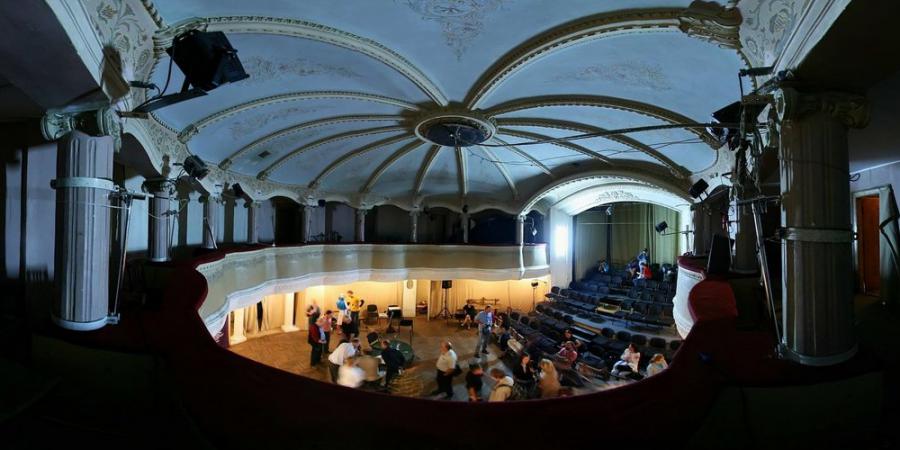
By Daryna and Volodymyr Olshansky
Translated by Areta Kovalska

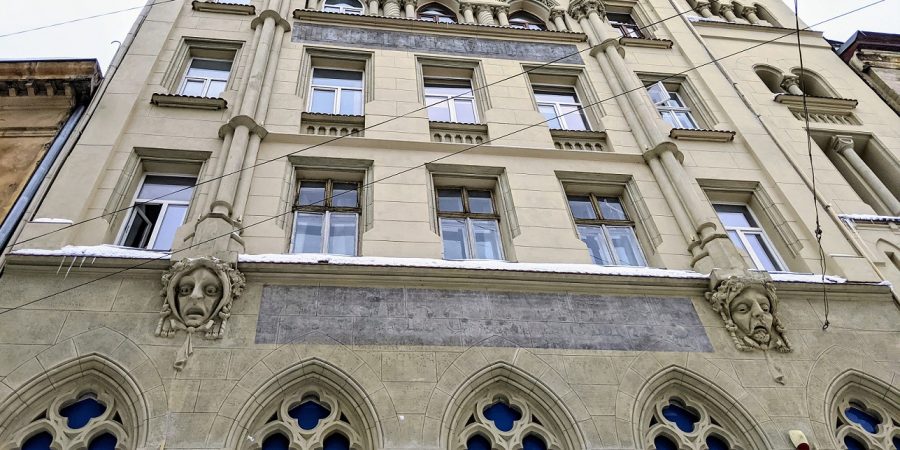




Absolutely fascinating article. Thank you